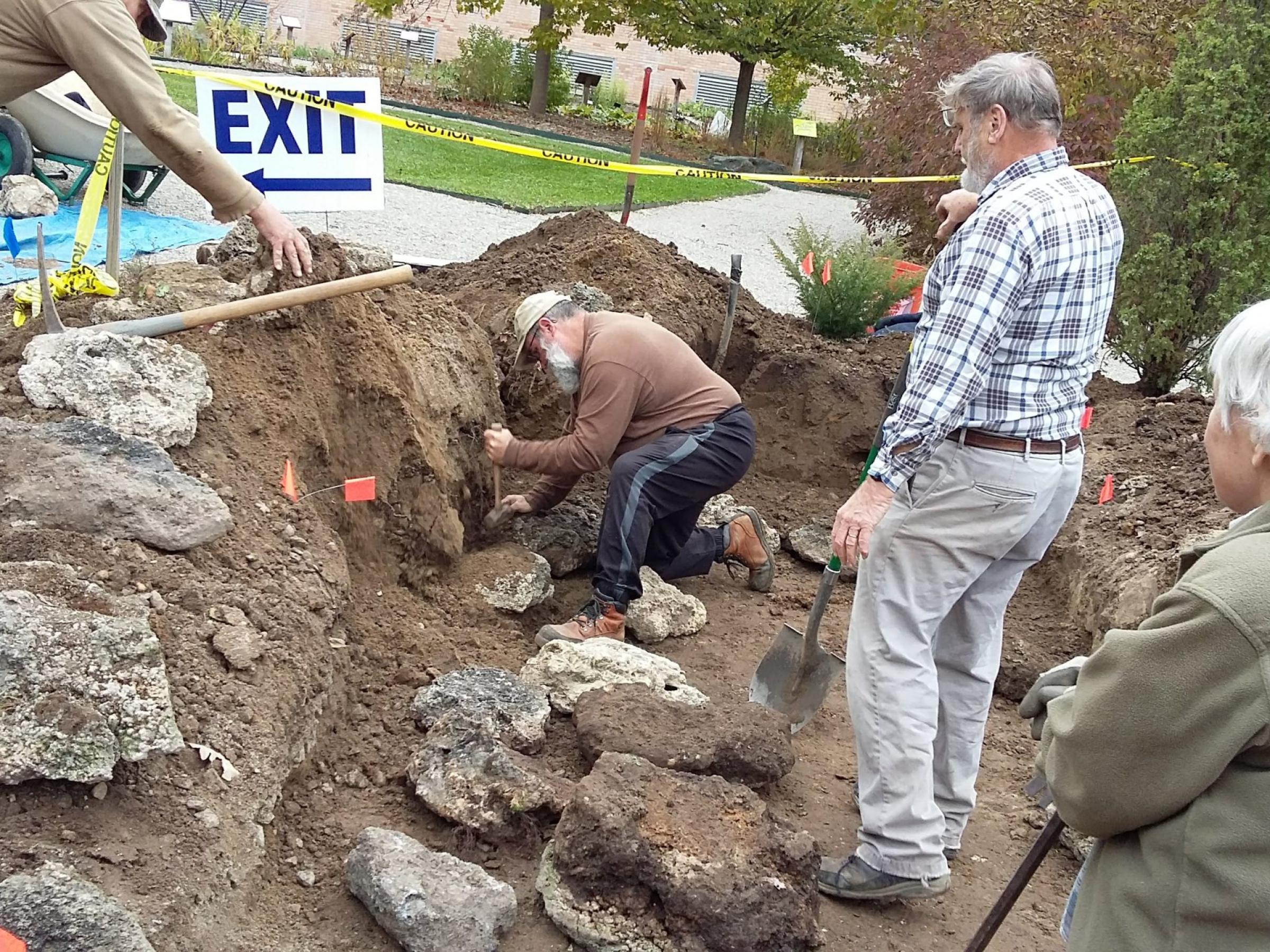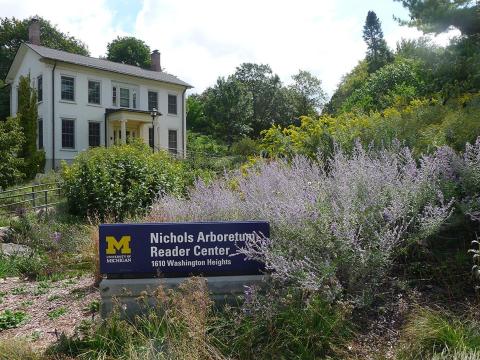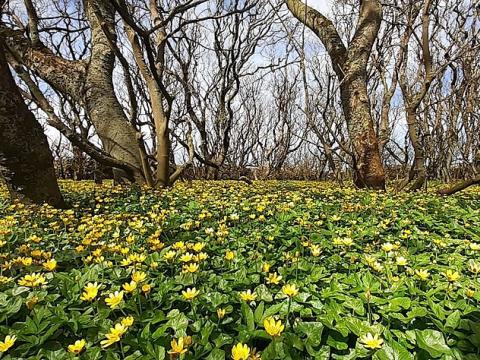

A volunteer group is moving boulders to revamp one of Matthaei Botanical Gardens’ unique growing spaces.
Marie Azary donated the namesake garden to the botanical gardens in 1985 in order to showcase the art of rock gardening as well as alpine plants from around the world. As the garden aged, however, its myriad specimens eventually ceded to the rise of a few dominant species. The space lost its magic, in turn.
Matthaei horticulturists are teaming up with volunteers from the local Great Lakes Chapter of the North American Rock Garden Society to restore the space’s former glory by literally elevating the garden.
“The original garden was only a flat, very gradual mound,” said Doug Conley, MBG’s garden coordinator and the project’s manager. “We needed better topography because taller ledges create more microclimates.”
In the shadow of the taller ledges, pockets of wet and shady habitat contrast the dry, hot, and sunny areas at the top of the rock ledges. That variability creates diverse habitats that support a wider diversity of alpine plants. Some plants like it sunny and hot while others like it wet, and creating various microclimates allows you to accommodate plants with different habitat preferences in a single garden, explained Tony Reznicek. He is an emeritus curator of the University of Michigan Herbarium and co-designed the renovated garden space’s hardscape with Bob Grease, the former director of Matthaei Botanical Gardens and Nichols Arboretum.
“You want as many different environments as you can get,” said Don LaFond, a member of the volunteer renovation team and the Great Lakes Chapter of the North American Rock Garden Society.
To build the diversity enabling topography, the crew needed rocks, but serious rock gardeners aren’t content to use any old rock. One type is the cream of the crop: tufa, a porous limestone that forms when alkaline water bodies evaporate over geologic time. The stone’s porosity nearly begs to be planted as it creates the Goldilocks conditions for alpine plants.
“Plants will root right in these rocks and establish,” said Tony Reznicek, an emeritus curator of the University of Michigan Herbarium who co-designed the renovated garden space’s hardscape with Bob Grease, the former director of Matthaei Botanical Gardens and Nichols Arboretum. “For many plants of alpine areas, that’s basically a requirement because they don’t like soil, and the tufa holds water without saturating the roots, which some plants can’t tolerate.”
Luckily, the local chapter of the North American Rock Garden Society has a reliable tufa source, a farmer in Toledo, Ohio, who often excavates tufa while plowing his fields. The crew traveled to Toledo in caravans to take their pick of the tufa accumulating in waste piles. Eventually, the crew brought back enough tufa to nearly double the elevation of the rock garden. That’s three pickup-truck and two dump-truck loads of tufa.
Once the stone was at Matthaei, the North American Rock Society gardeners artfully shaped their plot’s hills and crevices to align with the sun’s path in the sky. At dawn and dusk, one side of the garden receives full sun while the other sits in shadow. The resulting temperature and moisture gradient is large enough that winter snows melt away on the sunny side but remain in cold piles on the shaded side.
The space’s planting potential is now vast. Since the spring of 2023, volunteer rock gardeners have been adding a plethora of succulents, dwarf conifers, mosses, foxgloves, and other species. Plants that wouldn’t have done well in the past garden’s uniformly hot and dry space, like daphnes and gentians, have the team particularly excited.
The planting process is still ongoing as the volunteer team works at a patient and steady pace. It’s a labor of love that the team is taking the time to enjoy and perfect.
“I have to be patient with the progress of this garden, and at times it is difficult to do that. But by being patient and allowing the volunteers to be creative, we already have something even better than I had hoped for,” said Conley.
The gardeners expect to continue adding plants to the space next spring, and Matthaei Botanical Gardens is hosting a celebration for the garden in 2024.
Derek Smith tells stories about science and the natural world for a wide audience. He has written for institutions, blogs, and in magazines as a freelancer, intern, and volunteer. His writing has been featured in the ScienceBites blogs and the Matthaei Botanical Gardens and Nichols Arboretum newsletter.





